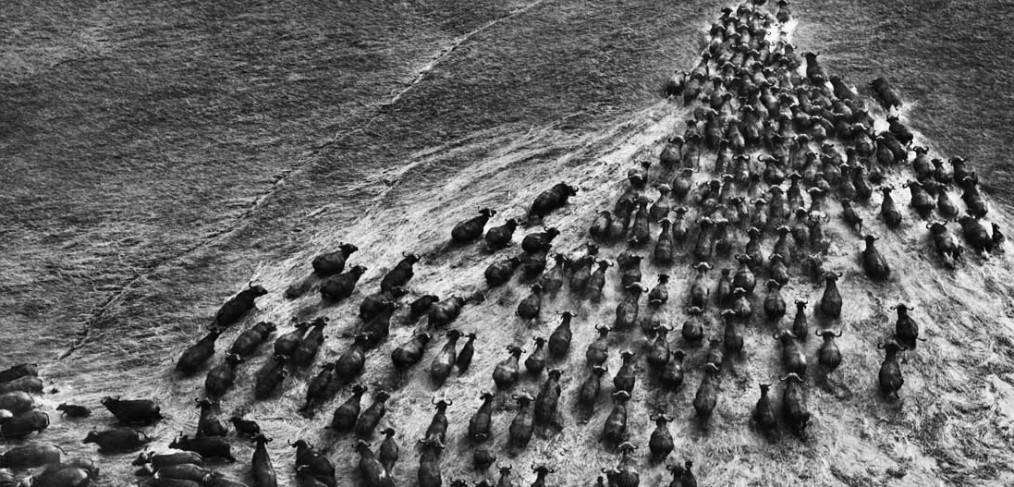
Genesis, to make a chair you need a tree.
Author: Luca Baldini
It was impressive. A wonderful documentary that came out from the collaboration between Wenders, the director, and Salgado, the photographer. The protagonist is all of humankind, or the “Salt of the Earth,” which is both the flavour of our planet, but also the salt that once is spread on the soil it dries up all the water that plants need to grow strong and healthy.
Salagado and his wife have had an incredible life so far, as Wenders describes in the Salt of the Earth. Their pictures are real, they represent the contemporary with a critical eye, they tell the most cruel side of humans. They tell what most people do not know about us and our planet. There is a cultural and material distance between us and what happens somewhere else, but Sebastiao Salago makes this distance equal zero. They bring us back down to earth again. It is a memento for us as designers, for us as part of the Salt of the Earth. Wim Wenders is a magister in creating a story about this great photographer and his intentions.

http://www.institutoterra.org/eng/csw/_lib/file/doc/arqslinks/20130423130648_RPPN_Fazenda_Bulcao_1999__mobilizacao_para_primeiro_plantio.jpg
The documentary is brutal, without any filters, and how photography should be, telling the truth through the subject of a still image. What is surprisingly interesting is that it is their last project “Genesis,” (amazonasimages.com) and it looks to give hope and feed again the soil covered by “the bad salt” in their own ground of Brazil. Sebastiao and Lélia built again a piece of tropical forest where there was once none (see their website institutoterra.org). It is a sign of belief in the power of reconstruction, but it is also something more. It is understanding that sustainability is possible, we can still produce and make tools such as furniture and so on, and remembering that to make a chair we need a tree. And that tree has to be planted again, otherwise we take something off and we do not return it. In a non circular system with no end.

http://hijabsegiempat.com/images/paris-segi-sebastiao-salgado-genesis-exhibition-3165-x-2315-1507-kb-jpeg.html
Everybody is talking about “green design” and the “eco-design,” but what are their actual differences with the classical way of designing? First of all the products should be 100% recyclable, should not harm the environment during the production process, and should be repairable (something that hardly happens with the technological devices). With these three criteria, I would like to add a couple more. First, we want to have a design which is human sustainable, meaning that products are not made using men but are instead made by men. Second we want to have a local way of producing, because transportation enormously increase the quantity of pollution, yet most of the time this happens because economical reasons. Can we carry out this behaviour? Not anymore I guess. The following examples and approaches from these Danish designers is quite appropriate.

http://l2.yimg.com/bt/api/res/1.2/4B9JUBiuvOI8O7rVg5.JuQ–/YXBwaWQ9eW5ld3M7Zmk9ZmlsbDtoPTM3NztpbD1wbGFuZTtweG9mZj01MDtweW9mZj0wO3E9NzU7dz02NzA-/http://media.zenfs.com/en_US/News/US-AFPRelax/terroir_chair_p.ce28b140856.original.jpg
(yahoo)
Jonas Edvard e Nikolaj Steenfatt from the Royal Danish Academy have discovered a new material developed from seaweed and paper. Where do the main ingredients come from? The Danish costs. Where is it produced? In Denmark. Do you prefer it darker or lighter? You can have it cost free for the environment, there is no colorant in it, it depends directly on the type of seaweed used in the process. Result: it does not harm the environment, it is natural, and the glue comes from the natural viscous and adhesive effect of the type of algae. And the pieces of furniture are outstanding, elegant, simple. They are archetypes, they come from nowhere and yet they are Danish, they do not have a fixed period, and yet they are contemporary symbols. The name of the series of objects is Terroir which translates to “ a description often used to determine the cultural and geological relation between products and where they are produced” (jonasedvard.dk). This is what Sebastiao would mean if he could speak about design as well, and in my opinion the “geological relation” is the missing piece of the big “sustainable puzzle.” Moreover, I am amazed at how important this can be if designers and the general creative population pay more attention to their surroundings. They can mean a lot for the sort of this planet. We can be “the good salt” for the earth.
Food and food packaging? Yes. Why did we learn to store our products in non-recyclable packages? Of course for some products it is a matter of hygienic circumstances, but for others it is not. And yet they could be stored in “boxes” that follows the nature of the food stored. They can even be obtained by the leftovers that the food industry produces during production. This is again local. It is also really sustainable, according to what was previously mentioned. The series This Too Shall Pass, created by the design studio tomorrowmachine, a Swedish and French based firm, is amazingly bringing this concept to life. They work on the concept of symbiosis, between the food that is contained and its container. This is the best example of eco-design, and also a perfect communication between shape (or material) and what it is the content, this studio works for innovative lifestyles that could really make the difference in the years to come (www.tomorrowmachine.se). It is the significato vs. significante that resolves its dialectic.
To the designer this mean operating with an awareness of their context, to the creative it means making the difference keeping the standard high, for the general population it is reclaiming the lost relation with their land. If this makes the difference, would you be different?









